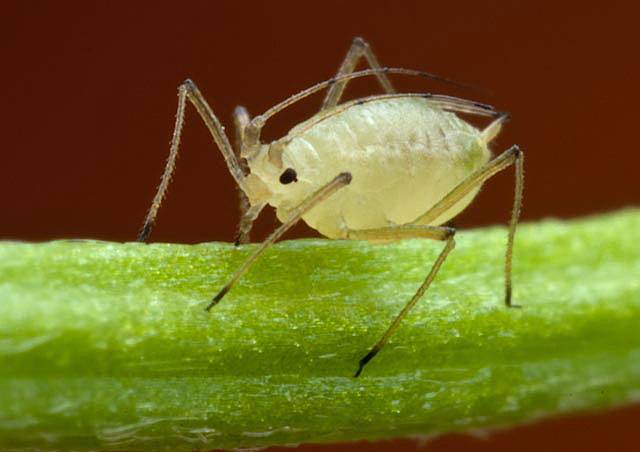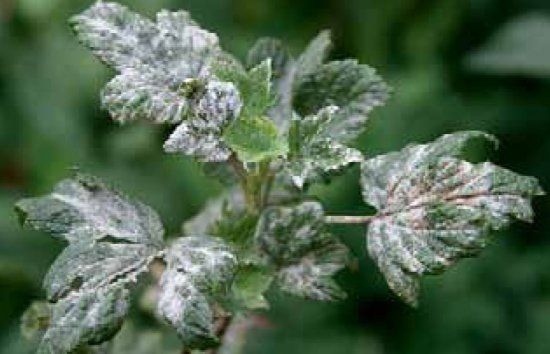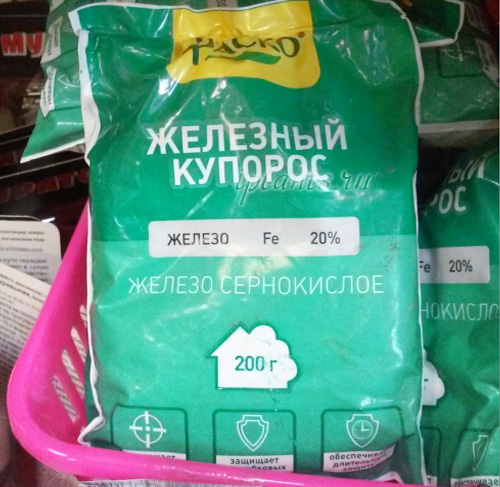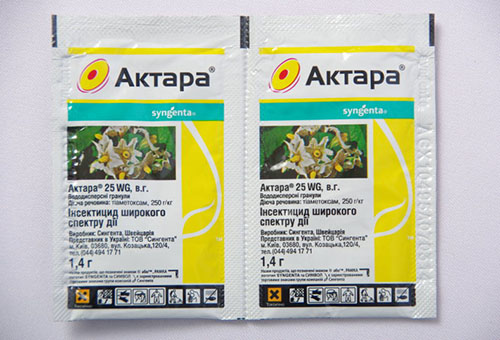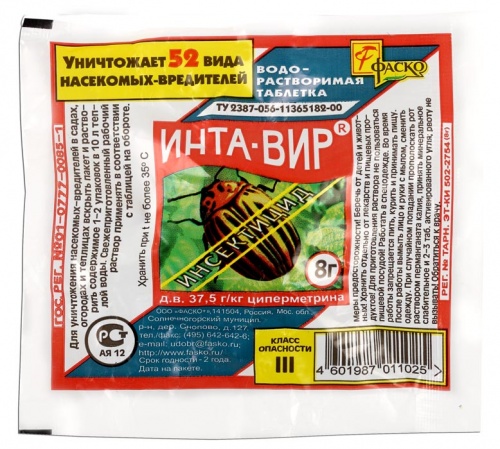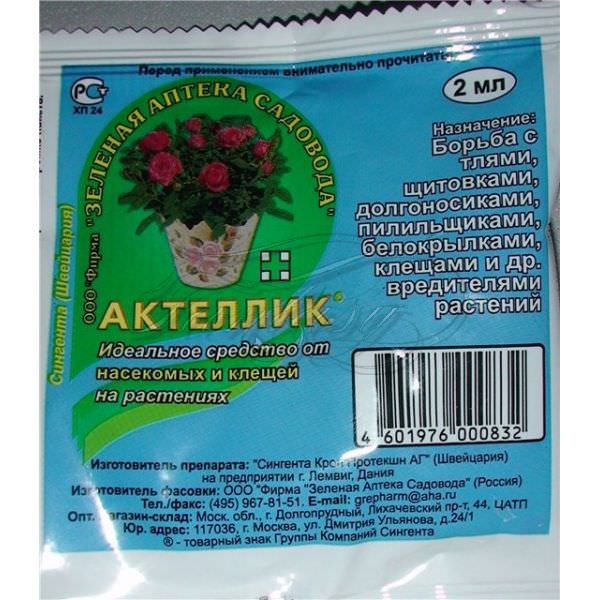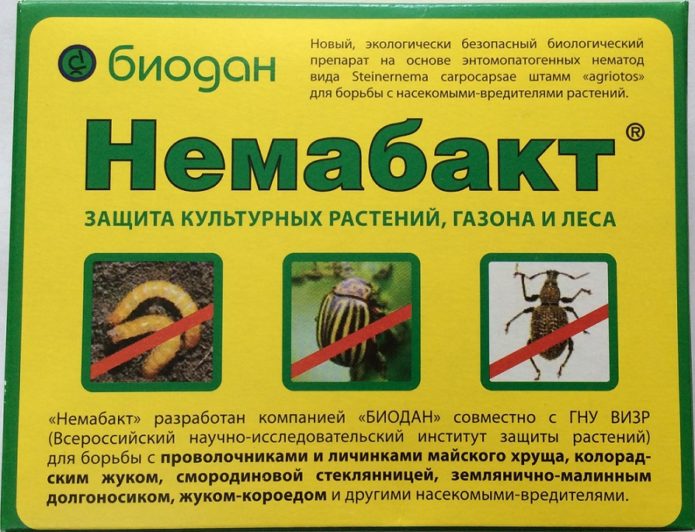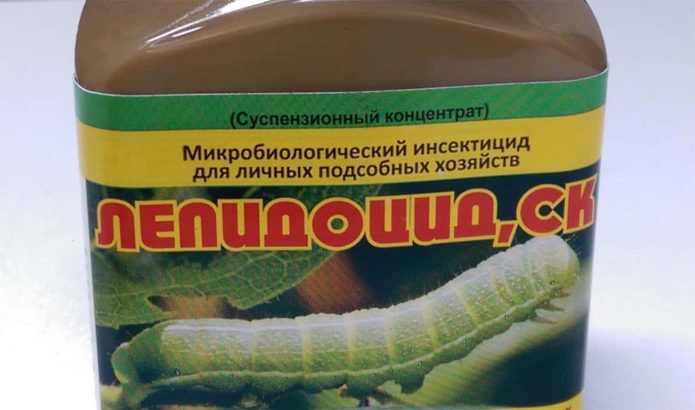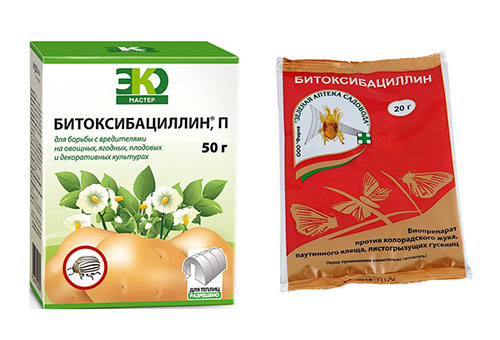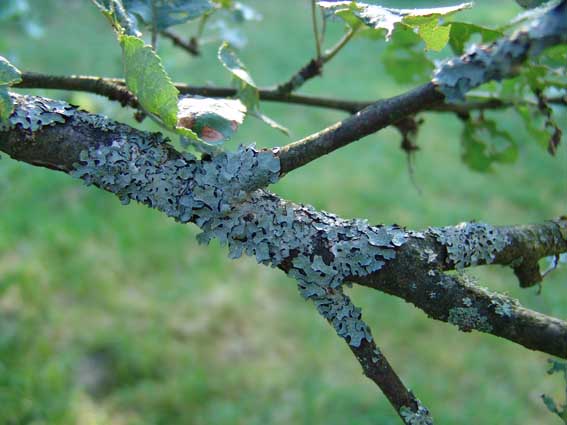Gooseberry is a crop susceptible to a variety of diseases, from spheroteca to rust and scab. Pests also settle on bushes. The damage can be so severe that gardeners lose their entire harvest. There are many ways to protect gooseberries. The main rule in this case is not to harm the plant and yourself.
Content
On the importance of controlling diseases and pests on gooseberries
Diseases and pests always work together. Insects feed on leaves and juices from them, as a result, the gooseberry weakens, its immunity decreases, and its susceptibility to disease increases. Infection can be viral or fungal. Moreover, viruses that are not amenable to any treatment are most often spread by insects. Moving from a diseased bush to a healthy one, they transfer sap and tissue particles with viruses on their paws and proboscis.
Fungi get on gooseberries in another way - they are brought by the wind. But in order to gain a foothold in place, spores need a moist environment, and insects, gnawing through juicy tissues, create this environment. Also, the site of injury can be mechanical damage that hail and wind cause. A twig broke, we made a pruning, pinched the top, any other wet wound or sticky surface of a young leaf is a gateway for fungi to get on the gooseberries.
Video: scab on gooseberries, recipe for remedies against it
Fungi, viruses and pests parasitize not only on cultivated plants. Weed thickets can be their place of dislocation. Therefore, regular weeding will allow you to handle the sprayer less often.
The gooseberry has medium-sized leaves and fruits, so the rate of spread of diseases or pests throughout the bush is very high. In particular, powdery mildew (mycelium) plaque covers the tops of all shoots in a few days, passes from leaves to berries, which acquire a grayish, dusty surface, become unsuitable for eating and rot.
Any diseases and pests, having destroyed the leaves, deprive the gooseberry of the opportunity to lay the buds of the next year. After all, a bud is born in the bosom of each leaf, if there is no leaf, there is no bud, and if it has time to start, it will not be able to mature. This is one of the reasons for the appearance of dry shoots in spring, they do not have live buds. Moreover, diseased berries and leaves, crumbling, infect the soil. Insects, once on the ground, move to weeds and neighboring cultivated plants in summer, and in autumn they hide in plant debris or under lumps of earth for wintering.
Prevention and control of gooseberry diseases and pests consists of several agricultural techniques. This includes: spraying, sanitary pruning, removal of damaged leaves and berries, soil cultivation. Insecticides and acaricides are used for pests, fungicides for diseases. There are biologicals and harmless folk remedies. Each technology has its own place and time.
Insecticides are drugs used to kill insects, but they do not work against ticks. Acaricides - preparations for the fight against ticks.
Protecting gooseberries in spring, before bud break
To control diseases and pests effectively, start in early spring. Until the ground thaws, the daytime temperature is kept at the level of + 5 ... +10 ⁰C, fungi and insects are at rest. There is a chance to destroy parasites in wintering places, that is, do not allow them to wait for the leaves to appear, settle over them and multiply. One of the worst pests is aphids. Her eggs overwinter on the shoots, near the buds. Fungi of diseases can also lurk here. Ticks sleep in old leaves and weeds, and fireflies in the upper soil layer. Don't miss the opportunity to destroy the parasites in their nests.
Chemical preparations for diseases and pests for early spring processing
Before bud break, while it is still far from harvesting, you can spray with chemicals. However, there is still no heat and leaves, the pests do not feed, therefore they cannot be poisoned by pesticides. This means that drugs need contact action, that is, they are capable of washing away eggs and myceliums, applying chemical or thermal burns to them. Contact agents must be applied very carefully, wetting the shoots from all sides, try to fill every crack. If the solution is thick, with suspensions, use a broom or brush. Be sure to cultivate the ground along with the fallen leaves.
Bordeaux mixture
In a package under this name, you will find lime and copper sulfate, which must be combined into an aqueous solution. The drug is usually sold in 100 and 200 g. A 3% mixture is needed before bud break. The percentage of Bordeaux liquid is determined by vitriol, that is, from 100 g of this blue powder diluted in 10 liters of water, a 1% solution will be obtained, for 3% you need 300 g of vitriol. This means that if the package indicates that the mixture contains 100 g of copper sulfate, then you need to buy 3 such packages and dilute them in 10 liters of water. Moreover, it is necessary to dissolve copper sulfate and lime in separate containers, each in a half dose of water (5 l). Then a solution of copper sulfate is poured into a lime solution in a thin stream, mixed and sprayed with gooseberries. Bordeaux mixture eliminates a complex of fungal diseases, thanks to copper ions released when interacting with air. The solution is not effective against insects, since alkali (lime) and acid (copper sulfate), when combined, create a neutral environment that is harmless to them.
Video: how to make Bordeaux liquid
Copper sulfate (copper sulfate)
The drug is mainly used in the Bordeaux liquid and is not advertised as an independent remedy for the fight against fungal diseases. More often it is used to disinfect cellars, plastered and concrete surfaces, etc. But it is an excellent fungicide that is used in agriculture. To process gooseberries in early spring, dilute 50 g of powder in 10 liters of water. The solution has an acidic environment and can harm insects - it corrodes the surface of eggs and larvae.
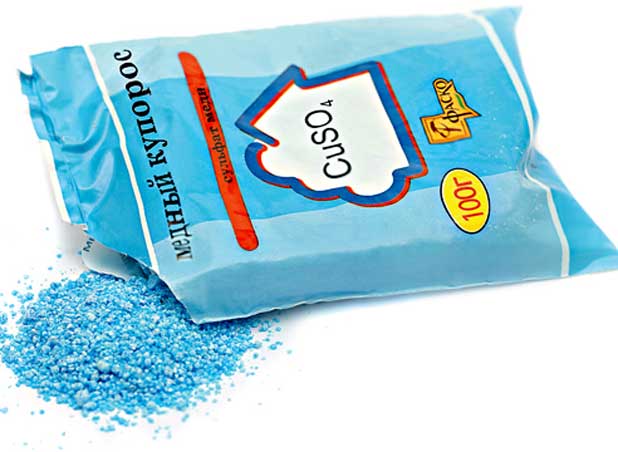
A solution of copper sulfate has an acidic environment, so it can burn not only fungi, but also the larvae of pests
Iron vitriol (iron sulfate)
This drug is characterized by an even higher acidity, therefore it is successfully used to combat fungal diseases and lichens. For spraying, dilute 300-400 g of powder in 10 liters of water. Iron vitriol is used only before bud break and after leaf fall, that is, it is contraindicated during the growing season, since it causes burns. This means that such an aggressive preparation, when processed in early spring, will also help get rid of pests wintering on the shoots.
Read the instructions on the packages carefully. Do not exceed dosage. Concentrated solutions of chemicals can burn even buds and wood.
Nitrafen
A few years ago, this pasty brown mass was very popular among gardeners, since it destroyed both pathogens and insect larvae at the same time. Today Nitrafen is banned, but it is still produced in Ukraine and imported from there. If you manage to find this preparation, then to process gooseberries, dilute 200 g of paste in 10 liters of water. But Nitrafen is very harmful to our health, it can accumulate in the ground, so it is recommended to use it no more than once every three years.
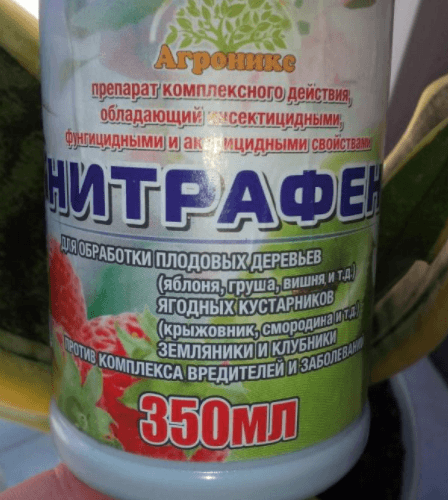
Nitrafen is highly toxic, use it as a last resort, for example, if there was a strong infection with diseases and pests last season
Specimen for examination 30
The product is sold in stores under the brands: 30 C, 30 D, 30 plus, etc. It is an oil emulsion, often containing insecticides and acaricides. The principle of operation is that the oil covers the shoots with a continuous film, clogs the spiracles of the larvae, disrupts the respiration process of fungi, and corrodes the surfaces of living organisms. Each brand is accompanied by its own instructions, the average consumption is 250-500 g per 10 liters of water.
Video: about the properties and use of the drug 30 V
Processing folk remedies
The most popular remedies that gardeners use to control pests and diseases are:
- Baking soda is alkaline. Like acid, it is also harmful to fungi and pests. However, baking soda is too mild to destroy insect eggs, so baking soda is used only for diseases before budding. For spraying, dilute 100 g in 10 liters of water.
- Soda ash is more aggressive than baking soda, eats away dirt in the kitchen well and even causes burns on the skin. To process gooseberries, you need 50 g per 10 liters of water. There is a chance that not only fungi will suffer, but also wintering pests.
- Soap - also has an alkaline reaction, but it has another good quality - it sticks to the surface, covers it with a continuous film. That is, the principle of action of soap is the same as that of Preparation 30. Grate half a piece of laundry soap (50 g) on a grater, pour 2-3 liters of boiling water, stir. When all the soap has dissolved, add up to 10 liters and process the gooseberries.
- Boiling water will burn all living things on the gooseberry, except for itself. Do the processing exclusively on the still dormant bush, while the buds are covered with thick lignified scales. You cannot pour boiling water over already swollen kidneys! Boil water, pour into a watering can and moisten all the shoots thoroughly. Do not pour on the ground for too long.Having warmed it ahead of time, you will wake up the roots, the bush will bloom prematurely and fall under even strong frosts.
- Ash is alkaline, but too weak for pest larvae. It is more often used to fight fungi, and it is also an excellent top dressing, since it contains all the elements necessary for plants, except nitrogen. There are many recipes, they all differ in proportions and technologies: from 100 g to 1.5 kg per 10 liters of boiling water. Pour, leave for several days or boil for 5-25 minutes, drain and water.

The pH of the solution is of great importance, any deviation from a neutral environment is to one degree or another dangerous for fungi, insects, plants and the gardener himself
The contradictions regarding the use of ash are due to the fact that it differs significantly for different gardeners. The composition depends on the raw material that was burned. In addition, ash quickly loses its alkaline properties. For example, if the remnants of the fire have been in the rain or the ash was stored in a damp room, then you can use it only as a loosening agent of the soil and no more. Before use, it would be good to check the ash solution with litmus paper, if it shows an alkaline medium (pH more than 7-8), then the effect will be. Over time, by experience, you yourself will be able to find out in what proportions, and how to make an infusion from your ash.
Video: preparing a soap solution and spraying with a broom
Apply the solutions carefully, not missing a single millimeter of each shoot, not a single bud. Only with such processing will there be a good result. Until the leaves appear on the gooseberry, only a few pests will survive, but they will still remain. However, the fight against them will not be as difficult and large-scale as in the area where the first early spring treatment was missed.
Pest and disease control in the green cone phase and before budding
It is not for nothing that in many instructions for the preparations it is recommended to spray on a green cone. After all, until dense foliage has appeared, all parasites concentrate precisely on the nascent, still sticky leaves. And again, you have a chance not to miss the moment and destroy pests, knowing their habitats. But now the fight against insects and pests will have to be carried out separately and with different preparations.
Video: sanitary pruning of gooseberries before spraying
Insecticides and acaricides to protect gooseberries from pests
For use during the growing season, pesticides of contact and systemic action are produced. After spraying, they are absorbed by the leaves and spread throughout the plant with juices. Therefore, it is enough to moisten the leaves well and the poisonous substance will appear even where your sprayer did not reach. Aphids, ticks, fire flies and other pests, feeding on poisoned vegetation, of course, die. It is still possible to use such preparations in the spring, since at least a month remains before the harvest. The waiting period (decomposition of poisons) after spraying is on average 3-4 weeks.
Karbofos (malathion)
The organophosphorus compound was first obtained about 80 years ago. It is both an insecticide and an acaricide. Karbofos is not very toxic to humans and animals, however, it is a powder or emulsion with a pungent odor, which is not very useful and pleasant. Therefore, prepare the solution in the fresh air, do not breathe over the container in which you are mixing the preparation. For 10 liters of water, 60 g of Karbofos is consumed.
Aktara
Many got acquainted with this means of complex action during the fight against Colorado beetles. But the venom is also effective against ticks, aphids, caterpillars and all other foliage-eating insects. Prepare a solution from 1.4 g of powder and 10 liters of water. The advantage of Aktara is that one spraying can destroy pests at all stages of development. The chemical circulates along with the juices in the plant for several weeks. Both feeding individuals and subsequent generations, which will hatch from eggs in 1-2 weeks, perish.One inconvenience: if you bought a 4-gram package, then you need an accurate scale that can measure 1-2 g for you. But gardeners usually act by eye.
Inta-vir
The drug has long been well known, but it is ineffective against the Colorado potato beetle, caterpillars, and does not help against ticks at all. This is not a poison, its active substance causes paralysis of insects, they are immobilized, cannot eat and die. On gooseberries, the insecticide can fight aphids and flames. For processing, dissolve 1 tablet in 10 liters of water. But experienced gardeners advise taking 2 tablets of the same volume for greater efficiency. Plus Inta-vira is in packaging. If you don't need a bucket of solution, you can break off half a tablet or a quarter, and store the rest until the next processing.
Actellic
This means of pest control, apparently, was discovered by lovers of Inta-virus and other insecticides that do not help against ticks. Therefore, Aktellik has a reputation as an acaricide. In fact, the drug has a wide spectrum of action, copes well with leaf-eating and sucking insects. He will rid the gooseberry of aphids, spider mites, fireflies. Aktelik is very toxic to aquatic organisms. If your site is near a body of water, it is better to choose another drug. Consumption: 2 ml for 2 liters of water.
On the need for repeated treatments
All of these drugs destroy already feeding insects. But even if you managed to process the gooseberries precisely along the green cone, it is possible that some individuals have already laid eggs by the time of processing. Poisonous and paralyzing chemicals do not affect eggs. In addition, pests from neighboring unkempt or abandoned gardens can come to your site at any time. Therefore, spraying should be repeated as many times as you can before flowering - usually 1-2 with an interval of 7-14 days.
The frequency of treatments depends on the duration of the specific drug and the type of pest you are fighting. For a better result, it would not hurt to identify your enemy and study his habits. It is also recommended to alternate drugs so that there is no addiction. During the flowering period of the gooseberry, you cannot use chemistry! You will kill pollinating insects.
Fungicides to fight gooseberry diseases
These agents, like the insecticides and acaricides listed above, are absorbed by the leaves and get into all parts of the gooseberry, including the roots. Fungicides act at the cellular level. They inhibit the division of nuclei of fungal cells, disrupt the respiration process, prevent the formation of the elements necessary for the construction of myceliums, inhibit energy exchange, localize the affected areas and prevent further germination of fungi deep into the tissues.
The most popular fungicide for disease control on gooseberries is Topaz. But it is more a preventive measure, that is, it is able to protect your gooseberry bushes from infection by any fungi for about 2 weeks. He can cure the disease only if no more than 3-4 days have passed since the first symptoms appeared. Therefore, do not wait for your bushes to become thoroughly covered with spots and bloom. Treat in spring on young, blossoming leaves, repeat before and after flowering, on growing ovaries.
Video: about the properties and effectiveness of Topaz
In addition to Topaz, at the same time, you can process the already mentioned: Bordeaux liquid (but already 1 percent), copper sulfate (20 g per 10 liters of water). Also effective are drugs: HOM (40 g per 10 L), Skor (2 ml per 10 L), Ridomil (10 g per 4 L), Arcerid (30 g per 10 L) and other fungicides.
How to process gooseberries in summer
From June to August, depending on the variety, berries are poured and ripen.Therefore, put aside harmful chemicals until autumn and buy biologics or think of folk remedies. The most hardworking gardeners literally deal with gooseberry ailments with their bare hands. Having found damaged leaves, they simply remove them from the bushes. So, foci of infection are easily and quickly destroyed.
Video: mechanical protection of bushes from diseases and pests
Biological products for pests
The principle of action of biological products is to create unbearable conditions for pests. In this case, ideas are taken from nature. For example, live microorganisms are used that can destroy the larvae of pests and even feeding individuals. Natural fragrances that repel insects, but are pleasant to people, are also widely used.
Nematodes plus bacteria
The drug consists of predatory microscopic worms (nematodes) and bacteria, which together penetrate into the insect larvae, feed and multiply in them, then crawl in search of the next victim. This is one of the few drugs that can destroy glass caterpillars on gooseberries. Sold as sponges impregnated with nematodes and bacteria.
To prepare the solution, you need to install a sieve or colander on the bucket, put a sponge with the preparation in it and pour 10 liters of water through this sponge. The water should be at the same temperature as the soil in your area. Microorganisms with water are washed into a bucket, come to life and are ready to work. Consumption: 10 liters of solution per one hundred square meters. Try not to get on the leaves, otherwise the nematodes will dry out. After handling, pour clean water over the top.
Lepidocide
It works only against lepidoptera and their larvae, since these insects have an alkaline environment in the intestines, and the preparation contains protein crystals that dissolve in alkali to toxins. That is, the substance is absolutely harmless until it gets inside the caterpillar. Lepidocide will help get rid of the caterpillars of the fire, which climb inside the berry and eat out all the contents. In addition, the product has a scent that repels butterflies, which means there will be fewer eggs on your gooseberries. The solution is prepared from 20-30 g of suspension or powder and 10 liters of water.
Bitoxibacillin
The drug will help to cope with spider mites, aphids and fireflies on gooseberries. Its action is similar to Lepidocide. The composition includes bacteria, getting inside insects, they find themselves in a favorable environment, form spores, corrode the intestines of pests from the inside. Death begins 2–3 days after treatment. Imagine how tiny the bacteria are, if 1 g of the preparation contains 45 billion of them, however, the consumption for gooseberries is significant: 80-100 g per 10 liters of water.
When working with biological products, carefully follow all the recommendations on the packaging, including the temperature regime, humidity level, terms and conditions of storage of the solution and the product itself. In most cases, you are dealing with live microorganisms, perishable protein substances or volatile ethers, which, through your fault, can lose their properties without ever getting into a favorable environment. It is because of non-observance of the instructions that many biological products turn out to be ineffective, and the reputation of being useless is unfairly assigned to them.
Biologics for diseases
The products contain microorganisms harmless to humans or substances with high antimicrobial properties. They are natural, and like previous biological products for pests, they need a special approach. The effect can be achieved only with strict adherence to the instructions. The main advantage is that there is no ban on processing times. For example, if you treated gooseberries with Fitosporin, then you can pick berries on the same day.
Fitosporin
Sold in powder, paste and already diluted emulsion.Each package has its own instructions and proportions for preparing the solution. The drug contains billions of living cells and spores. What's interesting: Fitosporin has a systemic effect, that is, it penetrates into plants. At the same time, the microorganisms contained in it are harmless to gooseberries, insects and people. They compete with fungi of powdery mildew, rust, scab, etc. They create unbearable conditions for them, deprive them of the opportunity to eat, breathe and grow. Fitosporin is inexpensive, it is consumed sparingly: 200 g of paste is enough for you to water the entire garden with beds and trees from a watering can, and not from a sprayer, for the whole warm season.
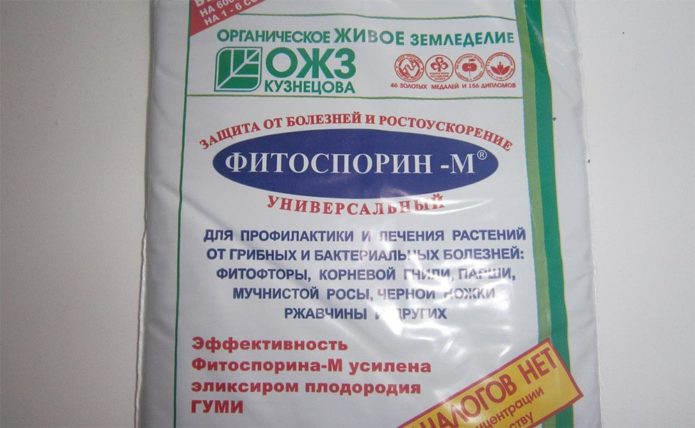
Fitosporin is universal in paste, although it is inconvenient to dilute, but one package lasts for a long time
Pharmayod
The iodine-containing water-soluble complex is used to fight fungi, bacteria and even viruses. Interacting with water, it forms active oxygen, which causes strong oxidation and destroys all harmful microflora on plants. Process gooseberries with Farmayod after pinching, pruning, disinfect tools and soil with it. Dissolve 100 ml of the product in 10 liters.
HB-101
Growth stimulant from Japan, used in 30 countries. In the composition of extracts: plantain, cypress, pine and Japanese cedar. Contains no artificial additives. The active ingredient is silicon dioxide, which strengthens the cell walls and activates their growth. In addition, HB-101 contains a whole complex of trace elements. Plants increase their resistance to fungal and viral attack. Consumption rate: 1 ml or 20 drops per 20 liters of water. Spray the gooseberries immediately after the flowers are shedding over the growing ovaries.
Folk recipes for processing gooseberries in summer
If necessary, treat with ash, baking soda, or soap recommended for spraying before bud break. But now the gooseberry is covered with leaves, which means that you can use agents that not only burn insects and fungi, but also penetrate into the plant, increase its immunity, and have a deterrent effect. The following solutions have already been tested by gardeners:
- To prevent diseases and fight aphids, dissolve 40 drops of iodine or brilliant green in 10 liters of water, add 50 g of soap.
- A mixture from all pests and diseases - pour 40 liters of water over a pharmacy bottle of iodine, birch tar, ammonia, fir oil, 10 g of boric acid. Work in a respirator! Stir, dilute a glass of this mixture in a bucket of water, you can water the entire garden. Few people need such a large amount, reduce doses to the amount you need.
- Dissolve 1 tbsp from aphids. l. flea shampoo in 10 liters of water.
- For fungal diseases, buy Trichopol at the pharmacy, dissolve 20 tablets in 10 liters of water.
Video: serum as a remedy for powdery mildew
Gooseberry processing in autumn
In the fall, after harvest, if your gooseberry is still bothered by diseases and pests, spray with any of the above preparations or those that you find yourself, and it has proven to be effective for you. The choice depends on the degree of damage to the gooseberry. For prevention and with an insignificant colonization of fungi and pests, biologicals and folk remedies are suitable. To destroy hordes of parasites, of course, one needs strong chemical preparations of contact and systemic action. But all this is relevant only until the leaves fall. Bushes without leaves can be protected only by means of contact action (Bordeaux liquid, Nitrafen, Preparation 30 and the like).
Video: Integrated Disease and Pest Control for Busy Gardeners
How to deal with lichens on gooseberries
Sometimes gooseberry shoots are covered with gray, greenish or rusty bloom. These are lichens.They appear in thickened gardens with poor ventilation, in lowlands, and also in the case of a close occurrence of groundwater. Lichens clog holes in the bark and make breathing difficult. Pests hide in them for wintering. The bush can be easily rid of such a nuisance; you do not need to uproot it.
- Remove plaque with a coarse cloth.
- Disinfect the freed shoots with a 1% solution of copper sulfate (100 g per 10 l).
- Spray with a 3% solution of ferrous sulfate (300 g per 10 liters of water).
Processing should be done in early spring or late autumn, when there are no leaves on the gooseberry.
Safety measures when processing gooseberries
First of all, it is worth considering the nature of the gooseberry itself. Splinters from thorns can penetrate very deeply into soft tissues, where, in combination with dirt and chemicals, they cause infectious diseases. Glass ampoules and the tools with which you open them are also dangerous. You need to be especially careful while working with the drugs themselves. Even harmless folk remedies in high concentrations can cause irreparable harm to your health. Therefore, when fighting for the health of the gooseberry, take care of yours and follow the rules:
- Wear special gloves that can protect you from injections, cuts, and chemical burns.
- Open the ampoules by wrapping them with a napkin.
- Do not breathe over the container in which you dilute the drug, use a respirator if possible.
- When preparing the solution and spraying, always position yourself so that the wind does not blow in your face. Better yet, choose calm weather for processing.
- Do not exceed the dosages indicated in the instructions. This is especially true for strong pesticides and odorous substances.
- If, during spraying, the solution gets on open areas of the body, face, mouth, eyes, stop the treatment, wash, rinse your mouth, rinse your eyes, breathe fresh air.
- Keep children and pets away from the processing area.
- Do not smoke, drink, or eat when you are working with drugs.
- Immediately remove the rest of the drugs in a specially designated place, dispose of ampoules and packaging. Store working solutions no longer than the specified period, put the date and name on the container.
- Carry out the processing in special clothes and a headdress, which are removed and washed at the end of the work. Also, remove and wash or discard gloves and shower.
Video: how to open a glass ampoule
There are a lot of drugs for pest and disease control. But there are general rules. So, for the treatment of bare shoots, contact action is needed, for spraying on the leaves - systemic. Fungicides will help against diseases, insecticides against insects, acaricides against ticks. There are also complex preparations of a wide spectrum of action. Apply chemistry 1–2 months before harvest and in autumn. In the summer, biologics and folk remedies are useful.
